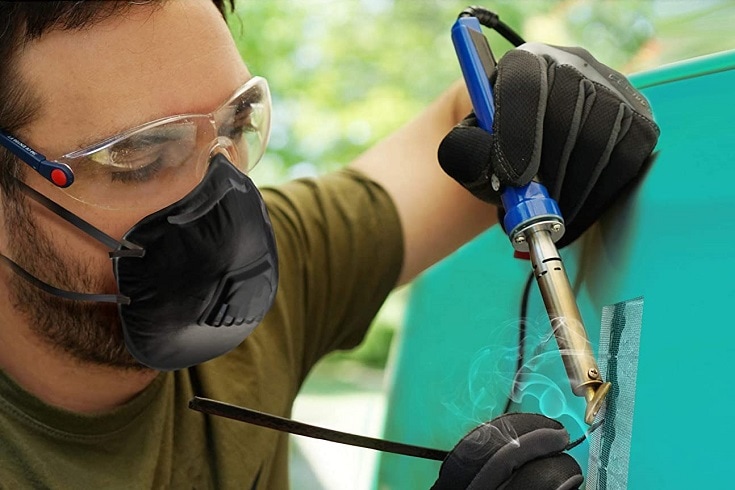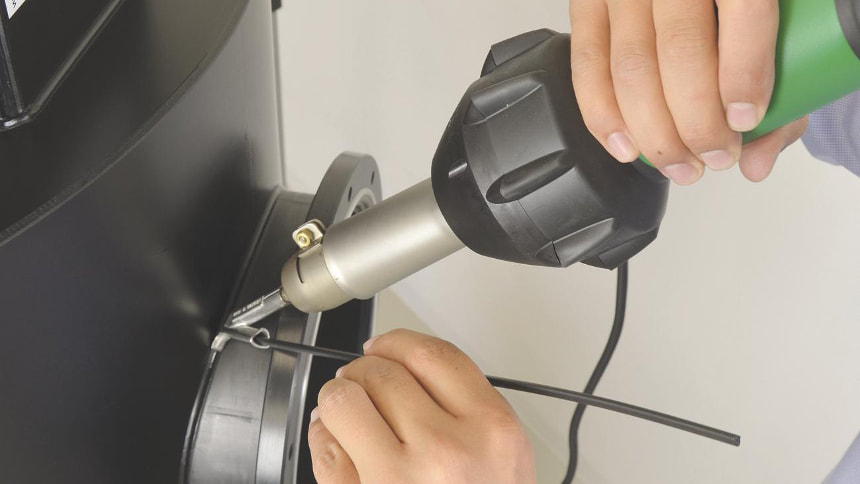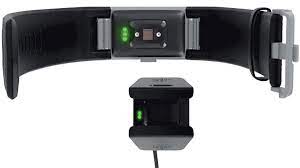How to weld plastic in easy steps. You don’t have to trash that beautiful plastic coffee table just because your kid accidentally broke it. You might think it is as good as useless but that it is very untrue.
There is something called plastic welding. Plastic welding gives you the opportunity to join plastics together. It might not look as good as new, but it is definitely better than trashing a coffee table you saved a lot to buy.
Plastic welding has been used a lot by plastic manufacturers to join plastic materials together. Most plastic items we buy actually passed through that process.
Since we are not well enlightened, we just do away with our damaged plastics when we could just fix them. You don’t weld only damaged plastics.
You can be creating a DIY item and need to join two plastic ends together. It is one of the neatest ways to blend your plastics into each other. It also works efficiently for melting plastics.
This article gives us an insight on how plastic can be welded, methods to follow and factors to consider before welding plastic.
Reasons for welding Plastic
Most regular people who are not into the welding fields do not know that plastic can also be welded just like iron and aluminium. Here are some reasons why plastic can be welded.
- Plastics are welded because their texture permits it.
- It is welded to join two ends together to make the joints strong.
- Plastic can be welded to fix cracks or broken areas.
- They can be welded to melt them so as to change their shape or size for a specific purpose.
- Instead of using fasteners or other joining elements, welding makes it neater.
- Welding plastic rarely causes any health hazards unlike iron and others. There might be no fumes while welding it.
- Welding plastics is permanent. There are no worries of loosing or breaking. It solidifies both joints together.
- It is economical. Instead of buying many bolts or screws to attach plastic to plastic, you fix it once and for all which helps you save.
Now that we know that plastic can be welded and the reasons why, we would proceed to discuss some factors that would be considered before welding can be carried out.
Factors to consider before welding plastic.
Before welding, there are some things you should look into. This is to ensure that your end result is neat and attractive.
Plastic Texture
Not all kinds of plastic can be welded. Common plastics that are welded include: Acrylic or polymethyl methacrylate (PMMA), polycarbonate (PC), Polypropylene (PP), polyethylene (PE), polyethylene terephthalate (PET or PETE), polyvinyl chloride (PVC) and a few others.
You must check out for these kinds of plastic before you begin any welding process to avoid any mishaps in the process.
.
Welding Surface
The welding surface can be either the plastics to be welded on or the surface on which you are welding the plastic. The idea here is to make sure the surface is smooth enough and free of debris or rough edges that could hinder your welding work.
Make sure the surface of the place you are welding is neat and ready to accept hot air. This has to be considered because if you don’t, you might weld particles alongside the plastic and this might ruin your result.
Therefore, clean out all surfaces with suitable pre-welding liquids or abrasives before you begin.
Welding Equipment
You should consider this according to the plastic texture. Different welding equipment work for various plastic types. Make sure you check the kind of equipment you are using before you begin to weld.
Whether it is a welding rod, a welding gun or an extruder, be sure it fits into what it is needed for at the moment. Also, you must check its wattage and voltage and heat resistance to be sure it can carry out the job properly.
This is very vital in any welding job. Make sure the equipment equals the job.
Other factors include; cooling time, plastic shape and size.
How to Weld Plastic
This is where we get down to the main business. You might want to read well if you have been struggling with fixing a crack in your chair or you have a home DIY plastic job to complete.
Check the Plastic Texture
Not all kinds of plastic can be welded. There are two types of plastics; thermosets and thermoplastics. While thermoplastics can be remoulded and welded, thermosets are the types that cannot be remoulded once processing has been finished on them.
The only type of plastic you can work within this case is thermoplastics because heat can penetrate easily inside them. To avoid chaos, read the label type. Most of them have their kinds written on them which makes it easy for you to know.
Choose a Welding Equipment
After you have decided if the plastic can be welded, you progress to choosing a welding material. This must match the plastic you are working on.
Whether it is a gun or an iron, choose the right one in terms of watts, heat resistance and pressure. This is to help you do a simple and fast job.
Set up the Welding Area
Next, set up the space for your job. Get everything you need ready. Clean out all surfaces; the plastic and the welding table. Be sure to remove all the dirt and particles from the area to allow you to do a smooth job.
You can use 80-grit sandpaper to remove any drawings or paintings from the plastic. Wipe with clean soft material. Make sure you set up in a well-ventilated area.
You can also wash the plastic if necessary and dry it properly before you begin. You can use a liquid stain remover to eliminate stubborn stains.
Kit up
After your set-up, set yourself up. Wear protective gear for your work such as helmets, face shields, protective glasses, gloves, long sleeves, overalls and any other necessary protective wear.
Label your Plastics
Here, you label your plastics according to their names. You can use numbers for easy identification. The aim is to be sure you don’t mix things up especially if they have the same colour.
.
Equipment Testing
Move on to do a test run of the equipment on a plastic. You are doing this for two reasons. First, to be sure your equipment works well and suits your job and second, to know the kind of plastic.
You can use a testing rod. They are quick to tell the kind of plastic you are working on. If the plastic sticks to the rod, it means it can work.
Hold the Plastic Pieces in Place.
Here, you are expected to tape the pieces of plastic you want to weld together. You can use strong tape or foil to hold them together. Make sure they align as you want them to be bonded. Proceed to use a C-clamp to press them to the welding table.
Preheat the Welding Gun
You are to preheat the gun for at least three minutes. This is to build up the heat tempo and set the temperature accordingly.
The recommended temperature is usually between 2000°C to 3000°C or 3920°F to 5720°F. Depending on the plastic, you can always regulate the temperature.
Tack Weld
Proceed to tack-welding loose areas of the plastic first. Join the loose edges before moving on to the major parts. Just apply limited heat to achieve this. This is to ensure the firmness of the entire work.
Main Welding
Move on to the main welding. Insert a welding rod into the gun. Fit a nozzle into the welding gun to help it hold the rod. Adjust the tip to suit the plastic joint size.
Melt the rod adequately to begin welding. Steadily begin to move the gun over the cracked plastic parts or the parts you wish to join. Take your time to make sure the plastic is welded before moving on.
The gun should be held at an angle of 45°. Move the gun simultaneously over the parts to melt the plastic properly. Be careful not to concentrate so much time on one angle to avoid burning the plastic.

Cool off
After successfully joining the plastics, turn off the gun and allow the plastic to cool. It doesn’t take time. Within minutes, you can know if the plastic is well joined or not. Be sure to join all intended parts well before it completely cools off.
Smoothen the Welded Joints
This is the last stage. You can use 180 or 320 grit sandpaper to smoothen out the welded area. Sandpaper all rough edges till you can slide over them. Don’t overdo it. You can wipe with a clean cloth after.
Welding Processes
There are a number of welding processes or methods in place for plastic welding. Some of them are:
Ultrasonic Welding: This is achieved by using high-frequency mechanical heat.
Hot gas welding: With the help of a heat gun and filler rod, heat is applied directly to the plastic to melt it.
Friction Welding: Heat is the main component for joining the plastic.
Laser Welding: Here, a laser beam is pointed directly to join the plastics to each other.
Vibration Welding: The heat is generated from vibration pressure. It is also known as linear vibration.
Radiofrequency Welding: This is done using high-frequency electromagnetic waves. Pressure from the waves are applied directly to the plastic.
Spin Welding: As the name implies, constant spinning on a particular spot generates the needed heat for plastic welding.
Other methods include infrared welding, hot plate welding and induction welding.
.
Summary
Important tips like this on how to weld plastic can help us do some jobs by ourselves. It helps you learn basic welding jobs for your personal purposes.
I’m sure most of us have been able to learn how to do simple plastic welding. Whether you need it at home or at the workshop for something major, this guide would put you through.
What kinds of plastic welding have you done? Or Would you try any if you haven’t?
Kindly head to our comment box and give us your answers. Don’t forget to share this article with your friends!
Thanks for reading!





